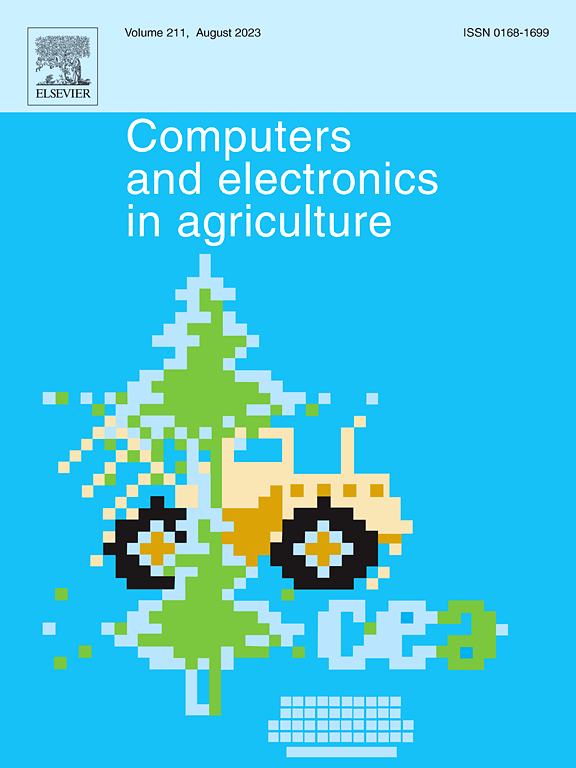A framework for estimating agricultural water requirements: Accounting for anthropogenic activities and climate change
IF 8.9
1区 农林科学
Q1 AGRICULTURE, MULTIDISCIPLINARY
引用次数: 0
Abstract
The present research introduces a framework titled the Decision Support System for Water Resources and Agriculture under Anthropogenic Activities and Climate Change Impacts (hereafter, AnthroClimDSS). This framework incorporates several methods: I) a two-step calibration of the Soil and Water Assessment Tool (SWAT) using streamflow data and Actual Evapotranspiration (ETa) estimation from the Surface Energy Balance Algorithm for Land (SEBAL); II) evaluation of fifty high-resolution daily downscaled CMIP6 global climate models (GCMs); and III) introduction of indicators to assess water supply risk, including the Agricultural Water Requirement Supply Index (AWRSI). A historical analysis of AWRSI in a sub-basin of Urmia Lake, Iran, reveals that, although agricultural water demand was fully supplied, significant pressure was placed on water resources, particularly groundwater, due to anthropogenic activities. Projections using GCMs within the AnthroClimDSS framework show that future climate change impacts are likely to be substantial. Continuing current practices could lead to severe water scarcity (possibly bankruptcy) and environmental degradation, as water demands increasingly outpace sustainable supply. However, scenario analysis suggests that the adverse impacts of both climate change and human activities can be mitigated through targeted agricultural water management at the farm scale. The proposed AnthroClimDSS framework offers a valuable tool for watershed planners to develop and implement more sustainable water resources management strategies.

估算农业需水量的框架:考虑人为活动和气候变化
本研究提出了人类活动与气候变化影响下水资源与农业决策支持系统(以下简称“人类气候变化决策支持系统”)框架。该框架包含几种方法:1)利用河流流量数据和土地表面能量平衡算法(SEBAL)的实际蒸散发(ETa)估算对土壤和水分评估工具(SWAT)进行两步校准;50个高分辨率逐日缩小CMIP6全球气候模式(GCMs)的评价;引入评估供水风险的指标,包括农业用水需求供应指数(AWRSI)。对伊朗乌尔米亚湖亚盆地的AWRSI的历史分析表明,尽管农业用水需求得到充分供应,但由于人为活动,对水资源,特别是地下水施加了巨大压力。在人类气候变化监测系统框架内使用gcm进行的预估表明,未来气候变化的影响可能是巨大的。如果目前的做法继续下去,可能会导致严重的水资源短缺(可能导致破产)和环境退化,因为水的需求日益超过可持续供应。然而,情景分析表明,气候变化和人类活动的不利影响可以通过在农场规模上进行有针对性的农业用水管理来缓解。提出的AnthroClimDSS框架为流域规划者制定和实施更可持续的水资源管理战略提供了一个有价值的工具。
本文章由计算机程序翻译,如有差异,请以英文原文为准。
求助全文
约1分钟内获得全文
求助全文
来源期刊

Computers and Electronics in Agriculture
工程技术-计算机:跨学科应用
CiteScore
15.30
自引率
14.50%
发文量
800
审稿时长
62 days
期刊介绍:
Computers and Electronics in Agriculture provides international coverage of advancements in computer hardware, software, electronic instrumentation, and control systems applied to agricultural challenges. Encompassing agronomy, horticulture, forestry, aquaculture, and animal farming, the journal publishes original papers, reviews, and applications notes. It explores the use of computers and electronics in plant or animal agricultural production, covering topics like agricultural soils, water, pests, controlled environments, and waste. The scope extends to on-farm post-harvest operations and relevant technologies, including artificial intelligence, sensors, machine vision, robotics, networking, and simulation modeling. Its companion journal, Smart Agricultural Technology, continues the focus on smart applications in production agriculture.
 求助内容:
求助内容: 应助结果提醒方式:
应助结果提醒方式:


